8 Yellow Angles
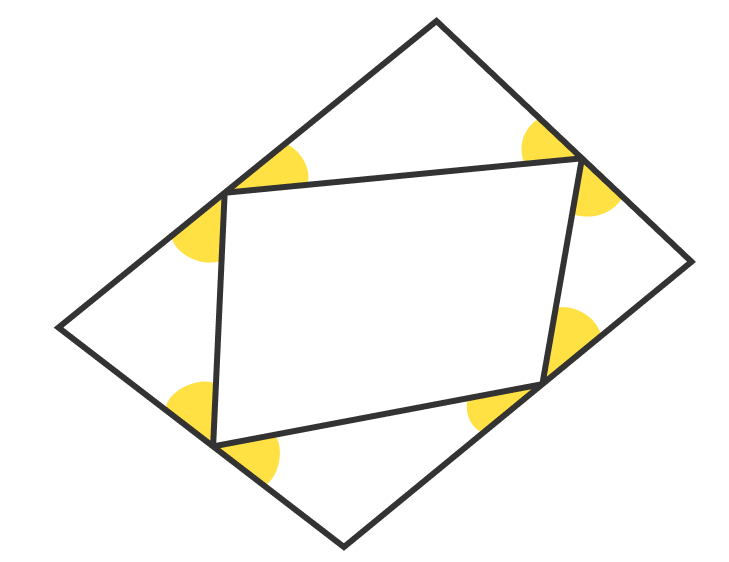
What is the sum of all 8 yellow angles?
This section requires Javascript.
You are seeing this because something didn't load right. We suggest you, (a) try
refreshing the page, (b) enabling javascript if it is disabled on your browser and,
finally, (c)
loading the
non-javascript version of this page
. We're sorry about the hassle.
6 solutions
I want to learn the proof.
Log in to reply
Don't worry, Here we are going... Take the concave or convexe quadrilateral and Draw a diagonal between two opposite vertices, then the concave or convexe quadrilateral is splitted in two triangles which sum of inner angles is 180º.. Look at this, sorry it's in Spanish . I hope you can understand it. If you don't understand it, tell me and I'll continue trying to teach the proof.
Log in to reply
I really appreciate your effort, but I think it would be best if you posted a detailed proof in your answer for people like me.
Log in to reply
@Soha Farhin Pine Pine – Ok, give me one or two days, please... See my previous link again,without any sound please.
P. S.- I'll write the proof, but I need one or two days...
Log in to reply
@Guillermo Templado – It's OK. It was just a suggestion. You don't need to painstakingly demonstrate the reasoning behind the implication, if it kills your time and energy.
Log in to reply
@Soha Farhin Pine Pine – Don't worry, I'm looking for a link, if I don't find a link with the proof I'll write it. Be calm... I'll do it... I have found this: here is the proof
P.S.- I hope you like it. The basic idea is there
Log in to reply
@Guillermo Templado – I like questions, because if you don't get one thing, or you can't understand something, or it's difficult for you, asking you can get to understand it..little by little, of course. For example, if you ask what is the Jacobian matrix of a differentiable function defined in R n , you are not going to understand it, if you don't ask, study preliminary knowledge,etc. In Spain we say: Preguntando se llega a Roma... Possible translation: Asking to arrive in Rome ...
It is a well-known fact that Sum of angles in a n-gon is ( n − 2 ) × 1 8 0 ∘ . This is often shown by triangulating the polygon with diagonals.
Log in to reply
Yes, it's like this, due to triangulation... Can someone show why the sum of interior angles of a triangle is 180 º (in the Euclidean plane R 2 )? This question is the bonus .... :)
Log in to reply
@Guillermo Templado
–
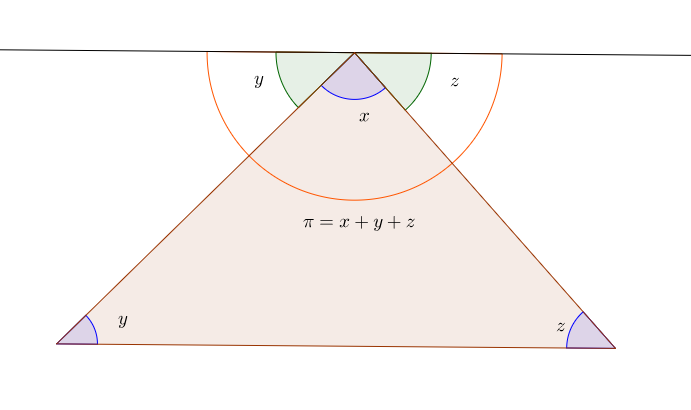 Here's a proof without words as you would like it.
Here's a proof without words as you would like it.
Log in to reply
@Tapas Mazumdar – Yes, that's exactly what I had in my mind, thank you very much Tapas Mazumdar
Log in to reply
@Guillermo Templado – So, what's my bonus?! :P
Log in to reply
@Tapas Mazumdar – I don't know... Maybe, other question? would you like it? The question is this: Postulate 5º Euclidean axiom: In a Euclidean plane, Given two points A , B , and a point C , not underlying in the line A B , then there exists one and only one line containing C parallel to A B . (Imagine this axiom in R 2 )Then this 5º Postulate Euclidean axiom in R 2 is equivalent to the sum of angles of any triangle in the Euclidean plane R 2 is π = 1 8 0 º ?
Log in to reply
@Guillermo Templado – I learnt about this axiom in school. This postulate was the base of how I proved the angle sum of the triangle above. To assume that there's only one parallel line parallel to one side and passing through the vertex opposite to the side. I guess if we are able to justify the angle sum result based on this postulate then the same could be justified for our postulate as well. Don't know if this works or not, but sometimes you have to make some assumptions and derive results that validate your assumptions. My final word is : Yes, maybe.
Log in to reply
@Tapas Mazumdar – Good start, you have proved one implication of this question, I advice you for the another implication reductio ad absurdum, nevertheless, we are free, so... don't listen too much to me...
Log in to reply
@Guillermo Templado – REDUCTIO AD ABSURDUM! Never knew that existed before this. I believe that philosophy and common sense are explicitly great tools that separate us from machines.
On the topic of axioms, my favorite one would be this conjecture (supposedly axiom):
Every even integer greater than 2 can be expressed as the sum of two primes.
( Christian Goldbach, 1742 )
What about you?
Log in to reply
Every even integer greater than 2 can be expressed as the sum of two primes.
(Christian Goldbach, 1742) is a conjecture.
One conjecture is not an axiom, one conjecture is a proposition,postulate what it's not known whether it's true or false... For example, Fermat's last theorem was a conjecture until Andrew Wiles proved it was true. Other example, Riemann Hypothesis is, right now, a conjecture because it is not known whether it's true or false... I don't have a favourite conjecture... There are 7 millenium problems . Every one of these problems is a special problem for me.
Log in to reply
@Guillermo Templado – There is a movie talking about Goldbach's conjecture. It's La habitación de Fermat, Fermat's room
@Tapas Mazumdar – I love that proof for a triangle :)
There's also the pictorial argument that the sum of exterior angles in an (convex) n-gon is 3 6 0 ∘ , which allows us to establish that the sum of interior angles in an n-gon is ( n − 2 ) × 1 8 0 ∘ .
Log in to reply
@Chung Kevin
–
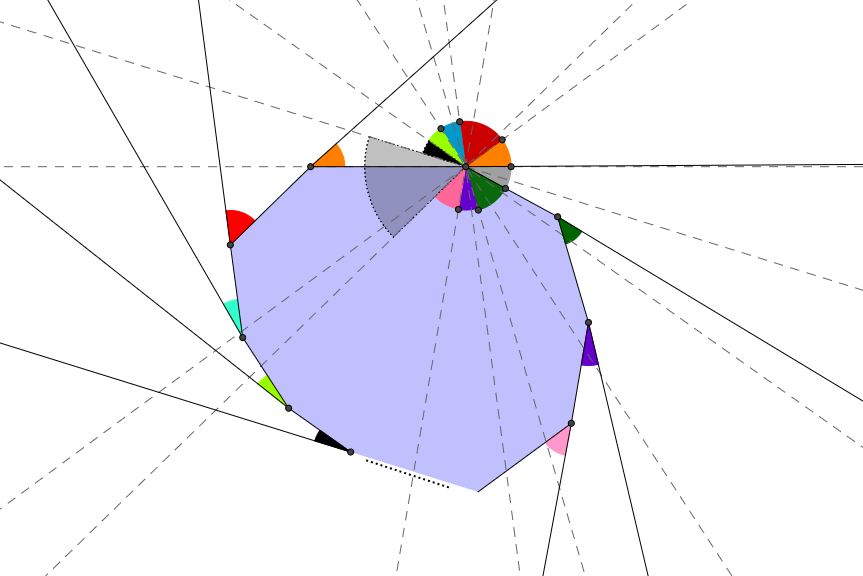 How about this?!
How about this?!
Log in to reply
@Tapas Mazumdar – Interesting. I like it!!... I'll check it out later, however I think there is an easier form to prove it... what is this form?
Log in to reply
@Guillermo Templado – I've just made the corresponding angles of each exterior angle at the first one so that it forms a circle. Angle sum in a circle as we all know it is 3 6 0 ∘ .
Log in to reply
@Tapas Mazumdar – yes, you have exactly said it.... (my/your idea)
Log in to reply
@Guillermo Templado – Very well. Thank you sir!
Log in to reply
@Tapas Mazumdar – Dont' call me sir, please. Call me Guillermo, you are my friend... Do you want me to write a proof about the sum of exterior angles of a n - gon is 360º? With words, of course....
Log in to reply
@Guillermo Templado – Yes, sure. I would love to see your proof!
Log in to reply
@Tapas Mazumdar – Ok, give me 30 minutes, more or less, please...
Log in to reply
@Guillermo Templado – Let A be a n - gon and x i , i = 1 , 2 , . . . , n be its interior angles. Then, we know i = 1 ∑ n x i = ( n − 2 ) × 1 8 0 º and sum of its exterior angles is i = 1 ∑ n ( 1 8 0 º − x i ) This implies, that sum of interior angles of A + sum of exterior angles of A = = i = 1 ∑ n x i + i = 1 ∑ n ( 1 8 0 º − x i ) = n × 1 8 0 º ⇒ sum of exterior angles of A = i = 1 ∑ n ( 1 8 0 º − x i ) = n × 1 8 0 º − ( n − 2 ) × 1 8 0 º = 3 6 0 º
Log in to reply
@Guillermo Templado – Then, I have a question for you, Tapas (my friend). Are you able to make a picture explaining my idea? For example, could you explain my idea with a picture of a 10 -gon? This is not an obligation, it's a suggestion or a request... I repeat, this is not an obligation, if you want to make it, do it. If you don't want to make it, don't do it... I know, it'll take you much time. You can do it (if you want) in a week, for example... Anyway, you are not obligated to do it...
Log in to reply
@Guillermo Templado – Yes, sure why not!
Log in to reply
@Tapas Mazumdar – Thank you very much, be calm please, take a week at least, please... Be calm, please...
Log in to reply
@Guillermo Templado – I don't know. I pondered over your idea of explaining with only a picture proof itself but had to include words for the sake of understanding. This is my idea (sorry, for not taking a week):
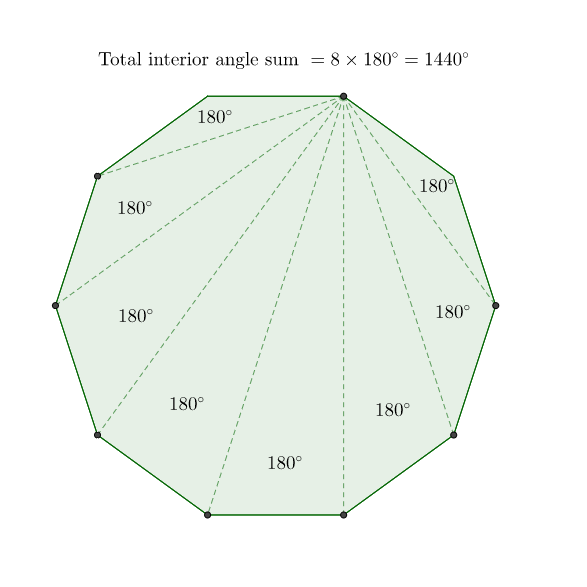
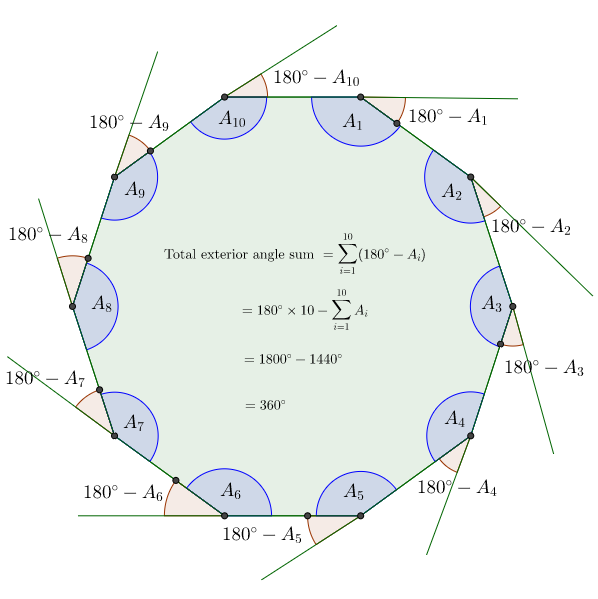 Generalization can be done from the above result
Generalization can be done from the above result
Log in to reply
@Tapas Mazumdar – Excellent and wonderful (+1). Now, If I were you, I would paint one more pic, nevertheless, be calm please. Don't hurry up, please. I would paint the center of gravity ("centroid", I do not know exactly the name of this point in English) of the regular decagon, I mean the center of the circumradius of this regular decagon),and a small circle around the center of gravity(barycenter or centroid) of the regular decagon and I would paint the external angles,each one of them of one colour. How you can do it? Join the centroid of the regular decagon with the vertices of the regular decagon...(If you have somedoubt ask to me)... And then your picture would be in a frame of my room. It would be amazing ...
Log in to reply
@Guillermo Templado
–
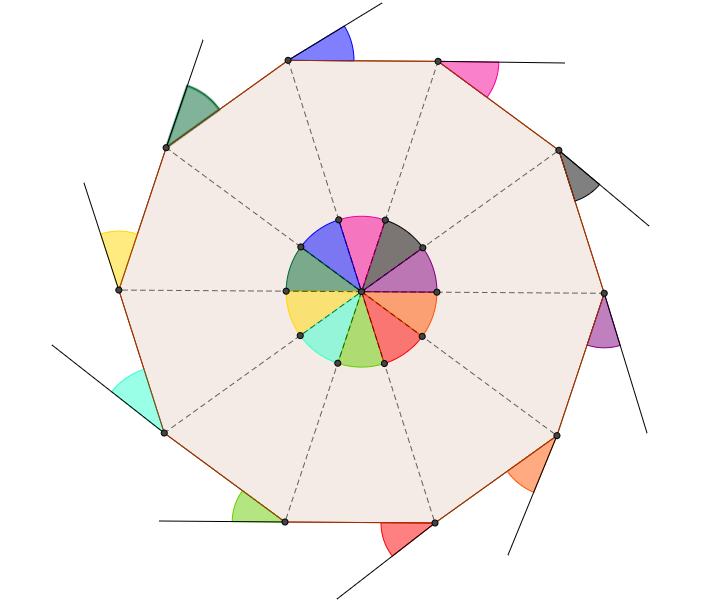 I think your idea was wonderful. This is a really neat way to prove the exterior angle sum theorem. Here's your artwork as you wished for. Hope you like it!
I think your idea was wonderful. This is a really neat way to prove the exterior angle sum theorem. Here's your artwork as you wished for. Hope you like it!
Log in to reply
@Tapas Mazumdar – Exact (+ 1), magnific , now to the page...
Log in to reply
@Guillermo Templado – Thank you! I've added my works to this wiki. Thanks for motivating me to do so. :)
@Tapas Mazumdar – And don't forget these pitures on this page . For me, these pictures explain much better the idea of sum of external angles of a n- gon is 360ª , and the sum of internal angles is ( n − 2 ) × 1 8 0 º
Log in to reply
@Guillermo Templado – Thank you for adding them to this wiki. :)
Log in to reply
@Tapas Mazumdar – you are going to add it. YOU...
Log in to reply
@Guillermo Templado – Oh me! That's so humble of you.
Log in to reply
@Tapas Mazumdar – You are the artist and you have done it, so... come on...
@Guillermo Templado – It would have been shorter if you would have skipped some steps like
Sum of interior angles is i = 1 ∑ n x i = ( n − 2 ) × 1 8 0 ∘
And sum of exterior angles i = 1 ∑ n ( 1 8 0 ∘ − x i )
Which can be further written as i = 1 ∑ n ( 1 8 0 ∘ ) − i = 1 ∑ n x i ⟹ n × 1 8 0 ∘ − ( n − 2 ) × 1 8 0 ∘ ⟹ 2 × 1 8 0 ∘ = 3 6 0 ∘
But regardless, this was the exact proof which I was expecting! :)
@Tapas Mazumdar – Yes, that's the one I was thinking of :)
You can make that into a "Proof without words"!
Log in to reply
@Chung Kevin – It is indeed a proof without words. :)
Log in to reply
@Tapas Mazumdar – Very well done, please, continue posting on this page An advice: Look at the beggining and add a header. Example:
[[heading|Proof without words]]
@Tapas Mazumdar – I have just written a header for this proof and I have just added this problem on this page
Let the angles of the smaller quadrilateral be a,b,c,d .
Sum of all the yellow angles ,
(180°- a ) + (180° - b ) + (180° - c) + ( 180 - d )
= 4.180° - ( a + b + c + d )
= 720° - 360° [since a+b+c+d = 360° as the sum of the angles of a quadrilateral is 360°]
=360°
Yay! Well said
@Nashita Rahman simple solution approach
sum angle of any quadrilateral is 360.
so,there has been created four 180 degree angles. and (180x4)=720
so, summation of yellow angles are=720-360=360 degree
One of the angle is right angle so some of other two is another 90° So 4×90=360
Forget about the inner quadrilateral for once Therefore the sum of the yellow angles and one extra angle with all yellow angle is(180 * 4 ) But that one extra is again a part of a quadrilateral Therefore the required sum is (180*4)-(360)=360
Sum of Yellow angles + sum of angles of the inscribed quadrilateral = 4 * 180 = 720
Sum of the angles of inscribed quadrilateral = 360
Sum of Yellow angles = 720 - 360 = 360
The sum of the interior angles in a convex or a concave quadrilateral is 3 6 0 º . This implies that :
1 . − the sum of all 8 yellow angles is: (Looking at the external convex quadrilateral(and 4 triangles)) 1 8 0 º ⋅ 4 − 3 6 0 º = 7 2 0 º − 3 6 0 º = 3 6 0 º
2 . − the sum of all 8 yellow angles is: (Looking at the internal convex quadrilateral( and 4 segments)) 1 8 0 º ⋅ 4 − 3 6 0 º = 7 2 0 º − 3 6 0 º = 3 6 0 º
3 . − the sum of all 8 yellow angles is (looking at the internal convex quadrilateral) the sum of the exterior angles of this quadrilateral, i.e, 3 6 0 º
PS.- Does someone want the proof: The sume of the interior angles in a convex or a concave quadrilateral is 360º? He/she can asks to me